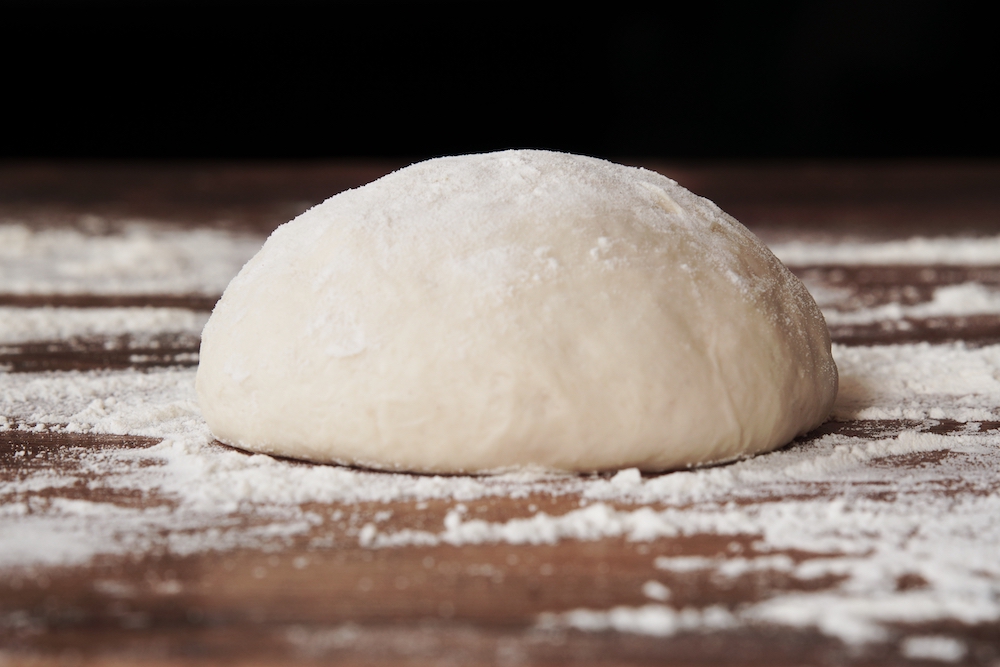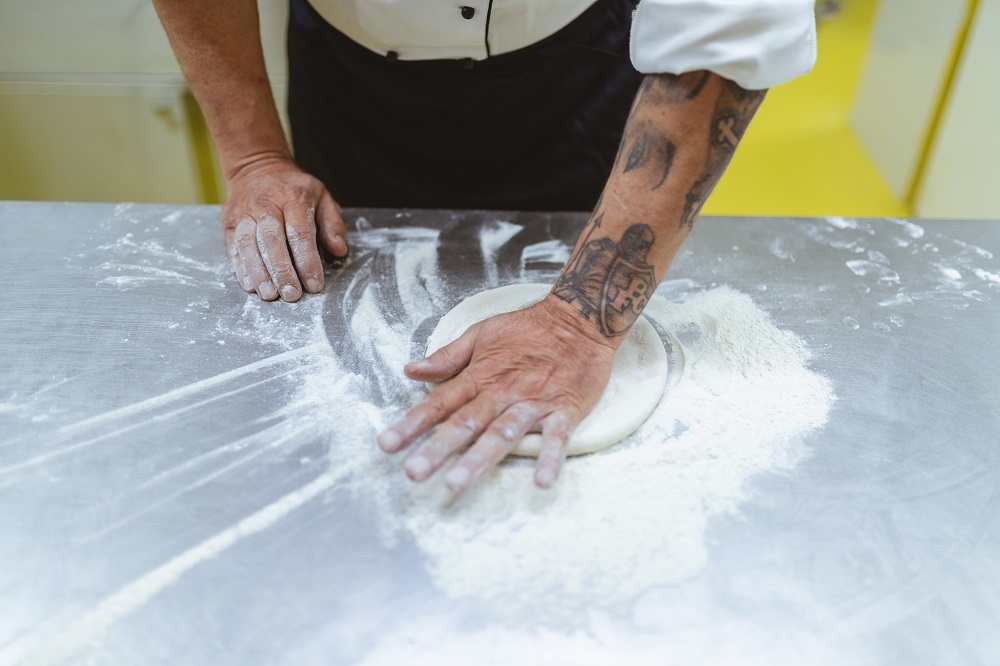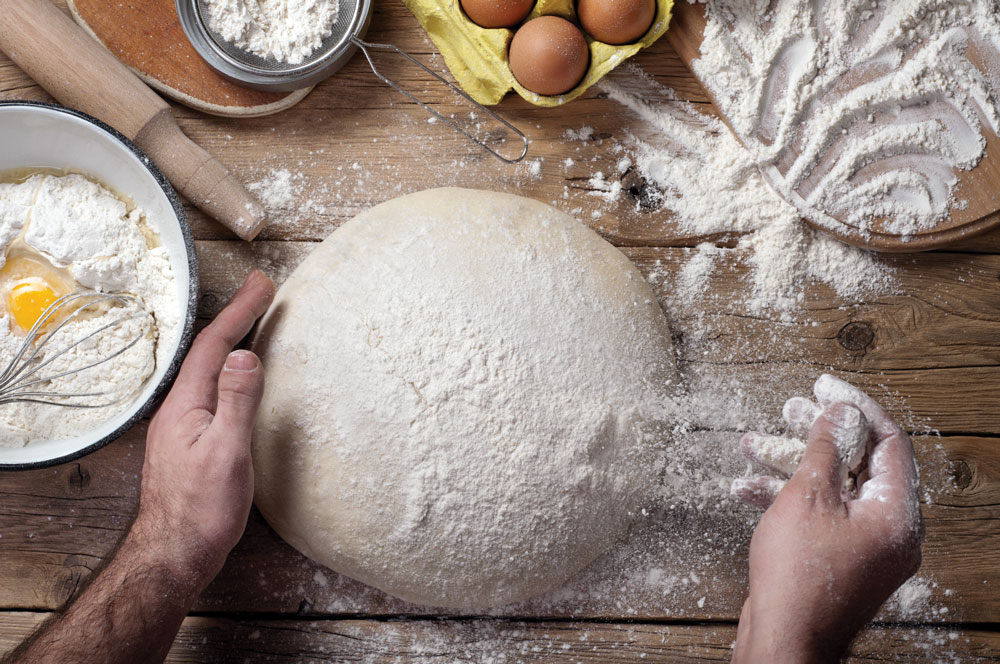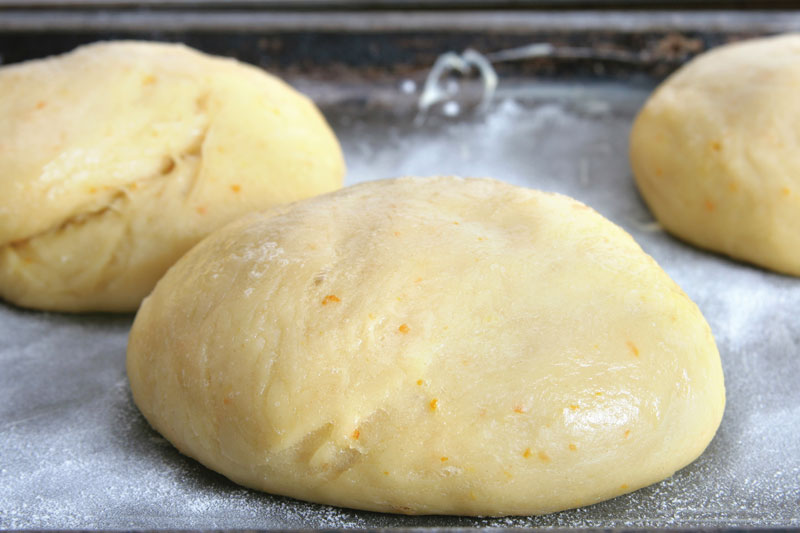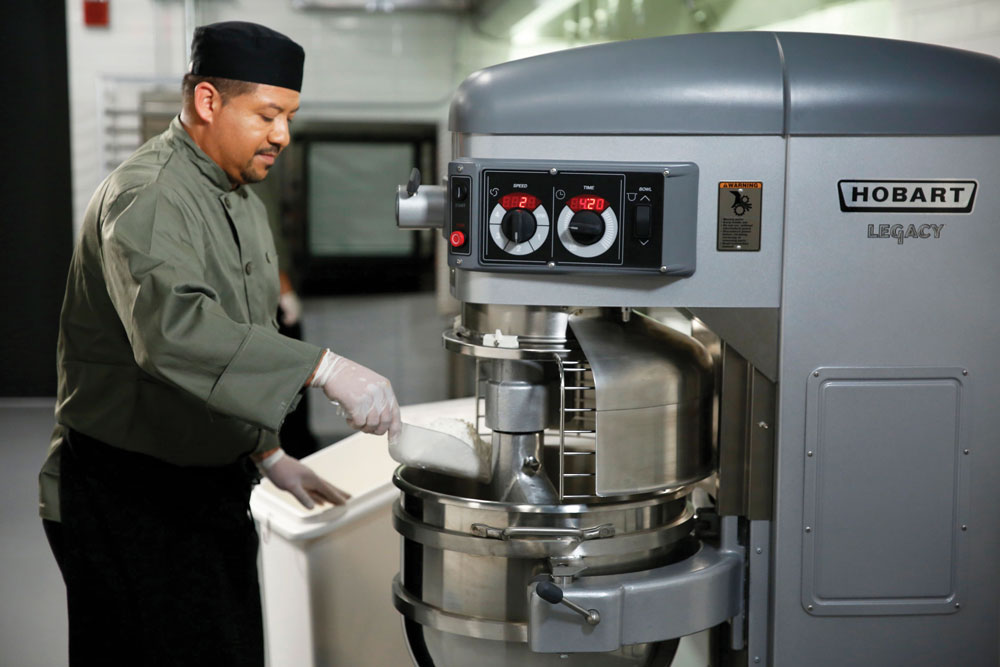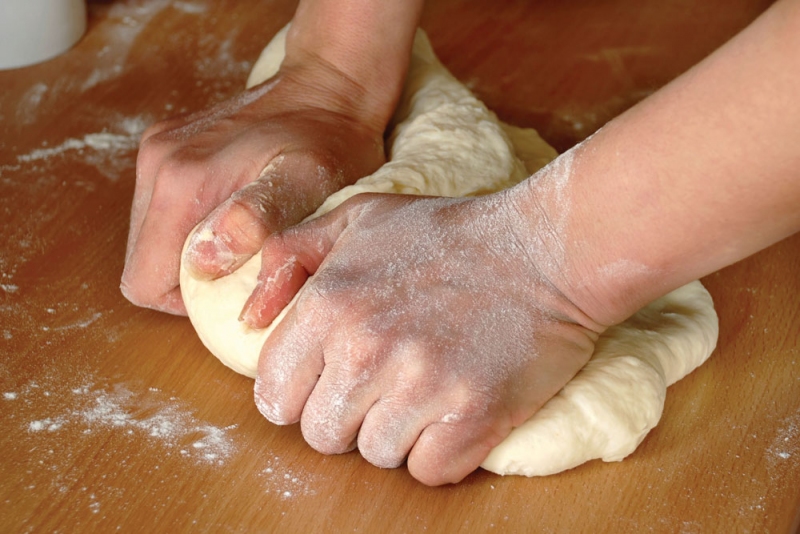QUESTION:
How can I incorporate some type of poolish/biga or ferment into my regular pizza dough for improved flavor?
ANSWER:
There are two pretty easy ways to accomplish this. I’ll explain the first here; the second can be found at PMQ.com/dough. Make your dough by what is called the “sponge and dough” process. This process requires that you prepare a sponge by mixing 50% to 70% of the total flour with all of the yeast and an amount of water equal to 50% of the weight of flour in the sponge. The water temperature should be in the 75°F to 80°F range to give a finished (mixed) sponge temperature of 75°F to 80°F. Typically, the sponge is mixed for only 5 minutes at low or medium speed, the idea being to incorporate the ingredients, rather than develop gluten. The mixed sponge is set aside in a suitably sized container and allowed to ferment for 3 to 3.5 hours. This time can go as long as 4 hours for increased flavor, but remember: Once you have settled on a fermentation time, always use the same time, and be sure to control the finished dough temperature, making sure to keep as close to your target temperature as possible.
Place the fermented sponge into the mixing bowl along with the “dough side” remainder of ingredients. The amount of water added will need to be calculated as follows: Start with a total dough absorption of 56%. This may be adjusted, if necessary, to improve dough handling properties. To do this, use your calculator and enter the total flour weight used in the dough—let’s say it’s 40 pounds. Then press “X” and enter 56, then press the “%” key and read the total dough absorption in the display window (40 X 56, the “%” key = 22.4 pounds of water). Remember, we have already added some of the water to the sponge, so we will need to subtract that amount from the total. If we used 70% of the total flour in the sponge, the weight of flour in the sponge will be 28 pounds. Since the amount of water added to the sponge was 50% of the sponge flour weight, the amount of water in the sponge is 14 pounds. This must be subtracted from the total absorption (22.4 pounds): Therefore, 22.4 – 14 = 8.4 pounds of water to be added to the dough at the dough side.
If you’re using oil in your dough, I like to hold it out initially, and add it only after the dough has been allowed to mix for about 2 minutes, as this allows for more complete and uniform flour hydration properties. Note: Since the sponge will be fairly warm (about 85°F), the temperature of the water added at the dough side should be as cold as possible (ice water) to give us a finished dough temperature in the desired 80°F to 85°F range. Remember to mix the dough just until it takes on a smooth, satiny appearance. Because of the fermented sponge, this will take less time than a normal dough made without a sponge. As soon as the dough is finished mixing, take it directly to the bench for dividing, balling and processing in your normal manner.
QUESTION:
We get very busy on Friday and Saturday nights. To help us keep up with the demand for pizza, we prepare our dough skins ahead of time and place them onto screens in the cooler. The problem we have is that the dough runs into the screen openings and ends up sticking to the screen. What advice can you give us?
ANSWER:
The simplest solution to your problem: Remove the dough skin from the screen as you get ready to use it, then invert it, placing it back onto the screen upside down. You can now sauce and dress the dough without fear of it sticking to the screen (assuming the screen has been properly seasoned). Another option: Place your pre-opened dough skins onto cardboard pizza circles with a little peel dust under them. I like to make my peel dust by blending together equal parts pizza flour, semolina flour and yellow cornmeal. This will prevent the dough from sticking to the cardboard circles. Place the pre-opened dough skins in the cooler on a wire tree rack and cover with a rack cover or a plastic bag. The dough skins can be easily held for up to several hours in this manner. To use the pre-opened dough, just remove them from the cooler about 20 minutes before you plan on using them. This will allow them to warm slightly; remove the skin from the cardboard circle and fit it to the baking screen, and you’re ready to sauce and dress it. The cardboard circles can be wiped off with a clean towel and reused a number of times.




